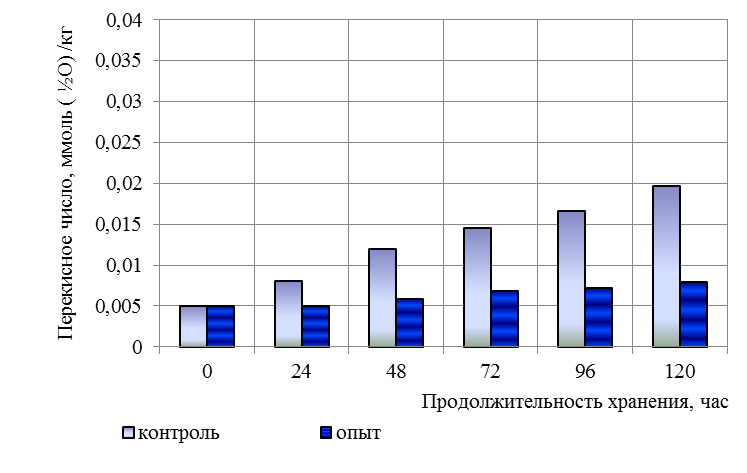COMPOSITION AND ANTIOXIDANT ACTIVITY OF ONION ANGULAR (ALLIUM ANGULOSUM L.), GROWING IN THE BAIKAL REGION
UDC 615:581.192
Abstract
The article presents data on the chemical composition and antioxidant properties of the organs of onion angular (Allium angulosum L.), growing in the Irkutsk region and the Republic of Buryatia. Allium angulosum L. has in its composition biologically active compounds, including those with antioxidant properties, which indicates a high potential and prospects for the use of this plant for food purposes. The aim of the work was to assess the chemical composition and total content of antioxidants in dried samples of leaves and stems of onion angular (Allium angulosum L.), growing in different conditions of the Baikal region. The study of carbon and nitrogen in different plant organs revealed that the carbon content is higher in stems, nitrogen in the leaves in all samples of onion angular, grown in different conditions. It is noted that in the organs of Allium angulosum L., growing on typical cold black earth, the content of the studied elements is higher in comparison with their content in other experimental samples. It was revealed that the stems and leaves of angular onions accumulate in their composition trace elements K, Na, Li, Mg, Ca. The study of the total content of antioxidants indicated that leaf extracts have in their composition more antioxidants than stems, regardless of the place of growth. The high content of antioxidants in Allium angulosum L. provides inhibition of oxidative processes in the storage of pork fat, which introduced crushed dried leaves of Allium angulosum L.
Downloads
Metrics
References
Golubev F.V., Golubkina N.A. Materialy XI Mezhdunarodnoy biogeokhimicheskoy shkoly. [Materials of the XI Inter-national Biogeochemical School]. Tula, 2019, pp. 28–32. (in Russ.).
Isayenko T.N. Vestnik APK Stavropol'ya, 2019, no. 1(33), pp. 83–94. (in Russ.).
Tarabanko V.E., Rodionov E.T., Toporkova L.B., Sergey M., Orlovskaya I.A. Khimiya Rastitel'nogo Syr'ya, 2015, no. 2, pp. 253–256.
Fomina T.I., Kukushkina T.A. Khimiya Rastitel'nogo Syr'ya, 2019, no. 3, pp. 177–184. (in Russ.).
Seregin A.P. Byulleten' MOIP. Otdel biologicheskiy, 2004, vol. 109, no. 5, pp. 43–47. (in Russ.).
Ivanova M.I., Buzarov A.F., Baleyev D.N., Bukharova A.R., Kashleva A.I., Seredin T.M., Razin O.A. Dostizheniya nauki i tekhniki APK, 2019, vol. 33, no. 5, pp. 47–50. (in Russ.).
Namzalov B.B. Turczaninova, 2016, vol. 19, no. 4, pp. 136–140. (in Russ.).
Kononova O.A., Kononov A.I. Vestnik Tomskogo gosudarstvennogo universiteta. Biologiya, 2017, no. 39, pp. 73–85. (in Russ.).
Tukhvatullina L.A., Abramova L.M. Sel'skokhozyaystvennaya biologiya, 2012, no. 3, pp. 110–112. (in Russ.).
Manukyan K.A., Ayrapetova A.Yu., Shatalova T.A. The Journal of scientific articles «Health and Education Millenni-um», 2017, vol. 19, no. 3, pp. 150–153. (in Russ.).
Bezmaternykh K.V., Shirshova T.I., Beshley I.V., Matistov N.V., Smirnov G.V., Oktyabr'skiy O.N., Volodin V.V. Khimiko-farmatsevticheskiy zhurnal, 2014, vol. 48, no. 2, pp. 36–40. (in Russ.).
Balayeva-Tikhomirova O.M., Leonovich Ye.A., Avlasevich O.V. Vestnik BarGU. Seriya: Biologicheskiye nauki. Sel'skokhozyaystvennyye nauki, 2017, pp. 9–19. (in Russ.).
Shirshova T.I., Beshley I.V., Golubkina N.A. et al. Ovoshchi Rossii, 2019, no. 1, pp. 68–79. (in Russ.).
Sazhina N.N., Lapshin P.V., Zagoskina N.V., Palmina N.P. Khimiya Rastitel'nogo Syr'ya, 2019, no. 2, pp. 83–90. (in Russ.).
Zabaluyeva Yu.Yu., Meleshkina N.V., Bazhenova B.A., Danilov M.B. Vse o myase, 2017, no. 2, pp. 12–15. (in Russ.).
Shah M.A., Bosco S.J., Mir S.A. Meat Science, 2014, vol. 98(1), pp. 21–33.
Vorob'yeva G.A. Pochvy Irkutskoy oblasti: voprosy klassifikatsii, nomenklatury i korrelyatsii: uchebnoye posobiye. [Soils of the Irkutsk region: classification, nomenclature and correlation: a tutorial]. Irkutsk, 2009, 149 p. (in Russ.).
Chimitdorzhiyeva G.D., Chimitdorzhiyeva E.O., Mil'kheyev Ye.Yu., Tsybenov Yu.B., Bykov M.Ye., Chimitdorzhiyev T.N., Yegorova R.A., Soldatova Z.A., Andreyev D.B., Korsunova Ts.D.-Ts., Davydova T.V. Pochvovedeniye, 2019, no. 9, pp. 1029–1038. (in Russ.).
Gosudarstvennaya farmakopeya SSSR: Vyp. 2. Obshchiye metody analiza. Lekarstvennoye rastitel'noye syr'ye. [State Pharmacopoeia of the USSR: Issue 2. General methods of analysis. Medicinal plant raw materials]. Moscow, 1990, 400 p. (in Russ.).
Yermakov A.M. Metody biokhimicheskogo issledovaniya rasteniy. [Biochemical research methods of plants]. Leningrad, 1972, 456 p. (in Russ.).
Yashin A.Ya. Rossiyskiy khimicheskiy zhurnal, 2008, vol. LII, no. 2, pp. 130–135. (in Russ.).

Copyright (c) 2020 chemistry of plant raw material

This work is licensed under a Creative Commons Attribution 4.0 International License.

This work is licensed under a Creative Commons Attribution 4.0 International License.
The authors, which are published in this journal, agree to the following conditions:
1. Authors retain the copyright to the work and transfer to the journal the right of the first publication along with the work, at the same time licensing it under the terms of the Creative Commons Attribution License, which allows others to distribute this work with the obligatory indication of the authorship of this work and a link to the original publication in this journal .
2. The authors retain the right to enter into separate, additional contractual agreements for the non-exclusive distribution of the version of the work published by this journal (for example, to place it in the university depository or to publish it in a book), with reference to the original publication in this journal.
3. Authors are allowed to post their work on the Internet (for example, in a university repository or on their personal website) before and during the review process of this journal, as this may lead to a productive discussion, as well as more links to this published work.











